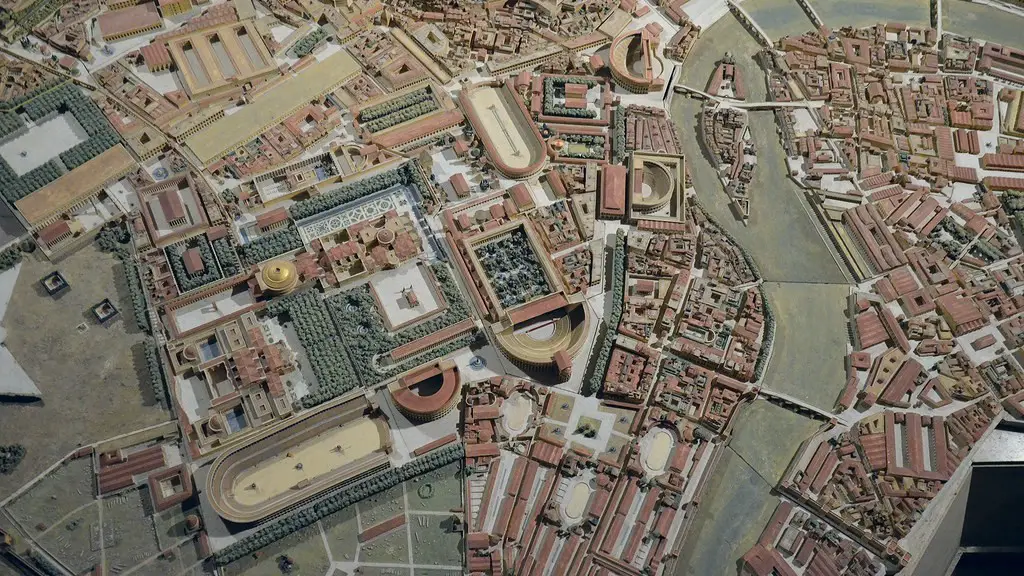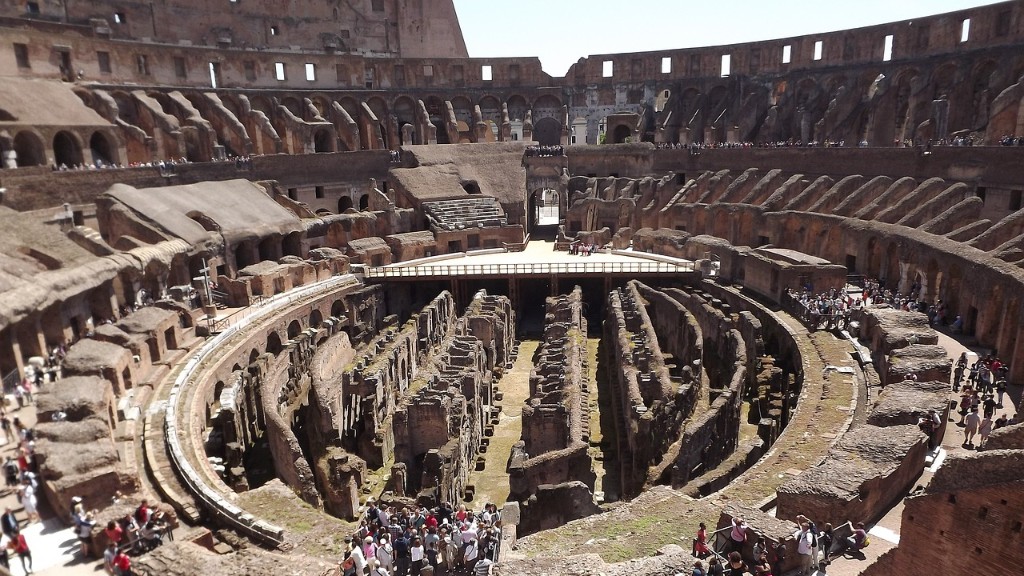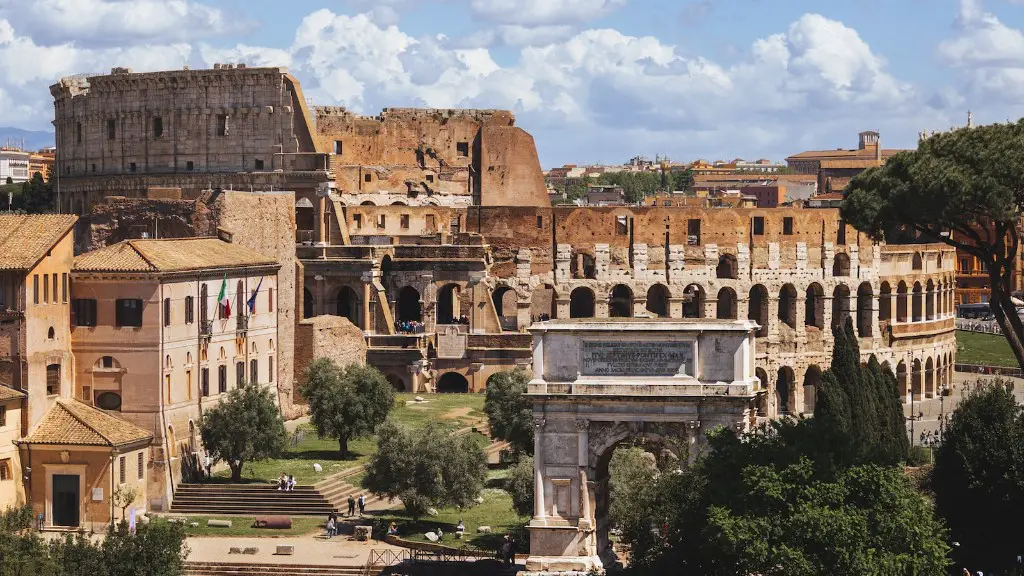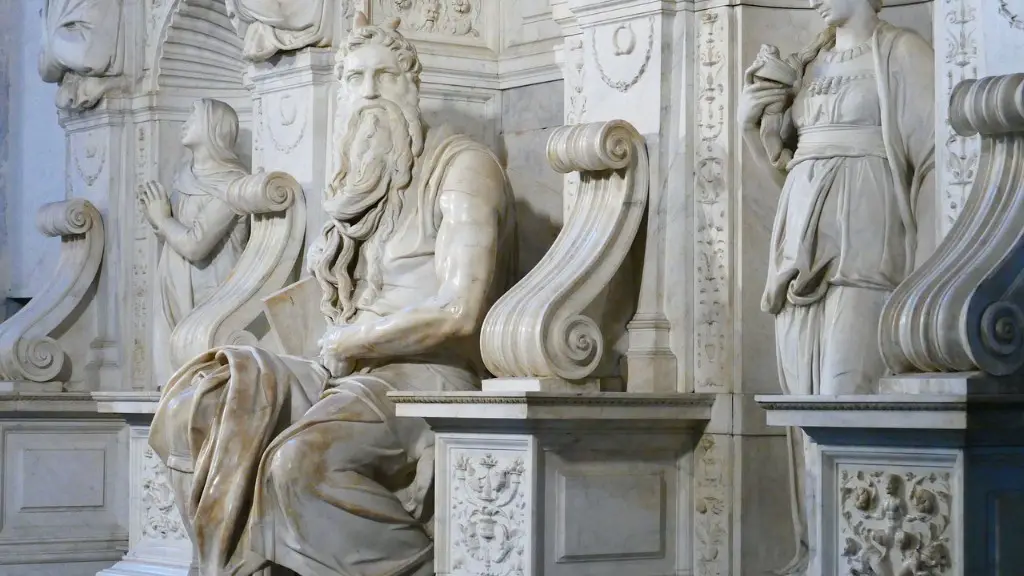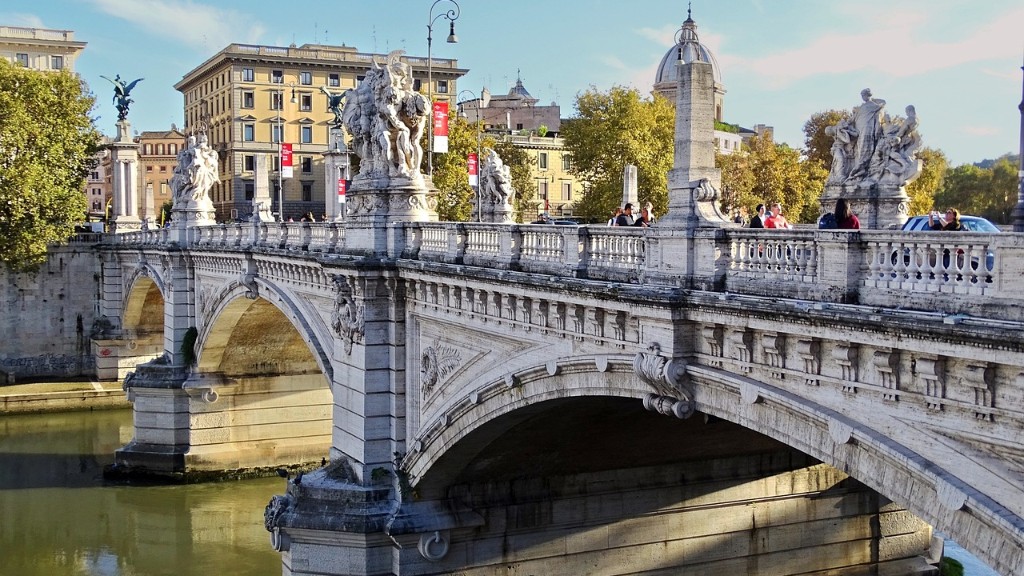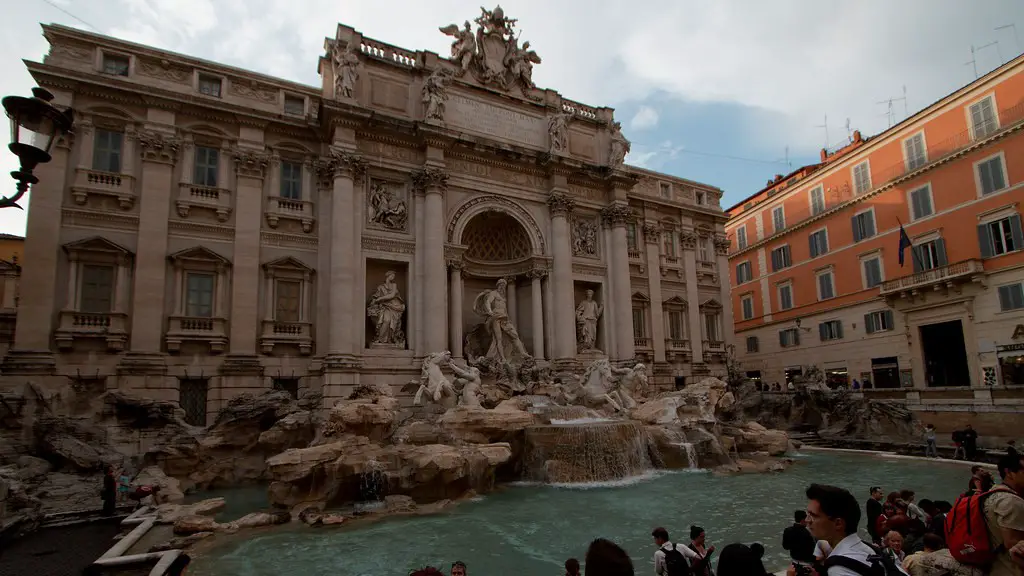The Ancient Romans are one of the most fascinating of all the civilizations of our planet. Described by Julius Caesar as “the most powerful of all nations,” the Romans were a thriving and successful society that developed an impressive empire that stretched from the British Isles to the edges of North Africa and the Middle East. But who were they and where did they come from?
Modern research suggests that the ancient Romans were descended from a variety of peoples, most primarily the Latins. A far-reaching and influential Iron Age culture, the Latins had settlements throughout modern Italy and southern Europe, particularly in what is now central Italy. The Latins first appeared around 1000 BCE and their language slowly evolved from Indo-European roots into the Latin language, which served as the basis for Romance languages like Italian, French, Spanish, and Portuguese.
The Latins were then further enriched by migrations from various Mediterranean cultures, such as the Etruscans, Greeks, and Celts, which all had a strong influence on the development of Rome itself. Another important source of Roman heritage was the Sabines, who, along with the Latin and Etruscan peoples, settled the Italian peninsula and created some of the most important cities and settlements, including Rome.
The merger of these diverse cultures, with their shared language and customs created a powerful new society and eventually a strong empire. This was not a homogeneous culture, however, and it is important to remember that there were other major ethnic groups in the Roman Empire, particularly the Greeks, Jews, and Egyptians. It is clear that Rome’s success was due in part to its ability to incorporate these other cultures and create a unified whole.
Clues from archaeology indicate that the city of Rome was built upon the remains of previous settlements, dating back to the 8th century BCE. This suggests that the Romans were not only descended from the Latins but also from these earlier cultures, the foundation of their great civilization. It is thought that the Latins were able to bring about a period of stability and economic prosperity, making them a powerful force in the region. This power drew other peoples and tribes to their succcessful civilization, and from them the Roman empire was formed.
It is believed that the Romans were descended from many diverse cultures and that their own cultures and traditions were shaped by centuries of exchange, development, and adaptation. It is unclear exactly which particular cultural groups the ancient Romans were descended from, but it is clear that they were a result of centuries of mixing and weaving of cultures and traditions.
Religion in Ancient Rome
Religion was an important part of Ancient Roman life. The Roman pantheon of gods and goddesses embodied many of the values and principles of Roman society. Although the Romans worshiped many gods, they believed that a supreme deity, ‘Jupiter Optimus Maximus’ (‘Jupiter the best and the greatest’), presided over their lives and affairs. The Romans were deeply spiritual and believed in the power of favoring the gods. Rituals and sacrifices were carried out in order to ensure the gods’ approval and gain the favor of the gods.
Religion provided the Romans with a way to connect with the divine and the spiritual forces of the universe. gods represented different aspects of life and were often seen as meditators between the divine and human worlds. The gods were believed to have control over events such as success, failure, war, and peace, and the Romans sought to gain favor with them through prayer, sacrifice, and dedication.
Roman religion was complex and diverse, and the primary god of the Romans changed over time. Many different gods and goddesses were worshiped in the Roman pantheon and these deities represented different aspects of life. Apollo, for example, was the god of prophecy and was associated with the Sun; Juno was the goddess of marriage and was associated with the moon; and Mars was the god of war and father of Romulus and Remus, the founders of Rome.
Religion was a part of all aspects of Roman life, including the arts, government, and social life. Religion was part of public policy and was used to promote morality, justice, loyalty, and national pride. Some aspects of the Roman religion were adopted and changed by later civilizations, a testament to the endurance and influence of the Romans.
Roman Art and Architecture
The Romans were renowned for their accomplishments in engineering, architecture, and the arts. From the Colosseum to the Pantheon to the aqueducts, Roman architecture is one of the few surviving legacies of their empire. Roman art and architecture were shaped by the influence of the Greeks, the Etruscans, the Egyptian, and other foreign cultures.
The Roman love of art and architecture was evident in their monuments and buildings, which showcased their engineering ingenuity and creativity. The Colosseum, the Pantheon, and the aqueducts were monuments of grandeur and were built not only for the purpose of entertaining, but also for the purpose of inspiring awe and admiration. Roman architecture featured the use of concrete, arches, and domes, shaping them into grand palaces, temples, and theatres.
The art of the Romans also displayed their admiration for the classical world and their desire to capture the magnificence of nature and craftsmanship in their sculptures and paintings. The Romans loved statues and sculptures, particularly those of gods and goddesses, and often incorporated real life models into their art and architecture. Paintings and murals were also popular and were used to decorate and embellish both public and private spaces.
Roman art was closely associated with religion and was often seen as a way to prove the power and influence of their gods. Statues and monuments of Roman gods were often erected in public spaces to honor and protect their citizens. The art and architecture of the Romans is still admired today, a testament to their skill and ingenuity.
Roman Language and Education
The Latin language of the Romans is one of the most important legacies of the Roman Empire. It is the ancestor of many modern languages including Italian, Spanish, French, and Portuguese. Latin was the language of the upper classes and the official language of the Roman Empire. Not only was Latin used for official documents and decrees, it was also used in literature, philosophy, law, and poetry.
The Roman Empire was also known for its educational system, which was based on the Greek model. Many of the educational institutes in the Roman Empire were open only to the wealthier classes, although some institutions also served the lower classes. Schooling in Rome was divided into elementary and higher education, with the higher education primarily focusing on law and rhetoric. Education was highly valued and seen as a key achievement.
Education in the Roman Empire was also closely connected with religion. The gods were central to Roman education and myths were used to teach moral and ethical lessons. Despite the fact that education was not a universal right in the Roman Empire, the educational system had a lasting impact and provided a strong foundation for the development of later educational systems.
Roman Government Structure
The government structure of the Roman Empire was complex and hierarchical. At the top of the government was the Emperor, who was advised by the Senate. The Senate was composed of the elected officials of Rome, the Patricians, who served as administrators, judges, and advisors. Below the Senate were the Plebeians, who were made up of the general population, which included citizens, farmers, merchants, and slaves. The Roman government structure also included assemblies, which were public forums where citizens could speak their minds.
The Roman government structure was often labeled as a “mixed constitution” because there were elements of both monarchy and democracy in the government. The Emperor held ultimate power and authority, but the elected officials of the Senate and the assemblies played an important role in governing Roman society. Laws were enacted by the Senate and assemblies, and the vast majority of citizens had to obey them.
Although the power of the Emperor was absolute, the office of Emperor was not hereditary and was often subject to change. Succession disputes sometimes caused disunity and turmoil in the Roman Empire, as different candidates vied for the position. This system of government lasted until the collapse of the Roman Empire in 476 CE.
Roman Law and Justice
The Romans developed an extensive and sophisticated legal system. The legal system was shaped by both Roman and Greek law, as well as other legal codes that had been adopted by the Roman Empire. The laws were enforced by the government and were divided into public, civil, and private laws.
Public law included laws that related to the government and upper classes. It also included criminal law, which regulated violent crimes and theft. Civil law was primarily concerned with the relationships between private citizens, and covered matters such as adoption, marriage, and inheritance. Private law was concerned with legal procedures, and applied to individuals, both rich and poor.
Roman justice was based on the principle of lex talionis, or the law of retaliation. This law followed the principle of an “eye for an eye”, where the punishment would be equal in severity to the crime that had been committed. The legal system was also based on principles of equity, fairness, and impartiality, with the aim of providing justice for all.
The Roman legal system was highly oppressive towards slaves, who had few legal rights. Despite this, Roman law did allow slaves to be manumitted, or freed from slavery, although this was often dependent on the discretion of the master. Roman law also allowed for the adoption of children, and provided some protection for the rights and property of women, although female citizens still did not have the same rights as males.
